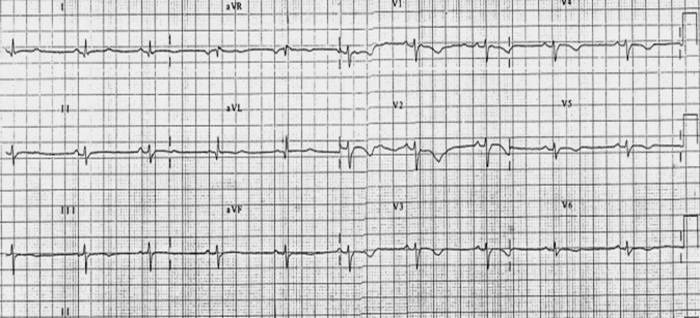Restrictive cardiomyopathy: Difference between revisions
Jump to navigation
Jump to search
Ochuko Ajari (talk | contribs) No edit summary |
|||
| Line 1: | Line 1: | ||
__NOTOC__ | __NOTOC__ | ||
{{ | {{SI}} | ||
{{CMG}} | {{CMG}} | ||
| Line 23: | Line 8: | ||
Restrictive cardiomyopathy is the least common [[cardiomyopathy]]. It is called this because it restricts the heart from stretching and filling with blood properly. Rhythmicity and [[contractility]] of the heart may be normal, but the stiff walls of the heart chambers ([[atria]] and [[ventricle (heart)|ventricles]]) keep them from adequately filling. So blood flow is reduced, and blood that would normally enter the heart is backed up in the circulatory system. In time, restrictive cardiomyopathy patients develop [[heart failure]]. | Restrictive cardiomyopathy is the least common [[cardiomyopathy]]. It is called this because it restricts the heart from stretching and filling with blood properly. Rhythmicity and [[contractility]] of the heart may be normal, but the stiff walls of the heart chambers ([[atria]] and [[ventricle (heart)|ventricles]]) keep them from adequately filling. So blood flow is reduced, and blood that would normally enter the heart is backed up in the circulatory system. In time, restrictive cardiomyopathy patients develop [[heart failure]]. | ||
==Causes | ==Causes== | ||
===Life Threatening Causes=== | |||
===Common Causes=== | |||
* [[Alpha-L-iduronidase deficiency]] ([[Hurler syndrome]]) | * [[Alpha-L-iduronidase deficiency]] ([[Hurler syndrome]]) | ||
* [[Amyloidosis]] | * [[Amyloidosis]] | ||
| Line 38: | Line 26: | ||
* [[Sarcoidosis]] | * [[Sarcoidosis]] | ||
* [[Systemic sclerosis]] | * [[Systemic sclerosis]] | ||
===Causes by Organ System=== | |||
===Causes in Alphabetical System=== | |||
==Diagnosis== | ==Diagnosis== | ||
Revision as of 04:15, 22 October 2014
Editor-In-Chief: C. Michael Gibson, M.S., M.D. [1]
Synonyms and keywords: Infiltrative cardiomyopathy; RCM
Overview
Restrictive cardiomyopathy is the least common cardiomyopathy. It is called this because it restricts the heart from stretching and filling with blood properly. Rhythmicity and contractility of the heart may be normal, but the stiff walls of the heart chambers (atria and ventricles) keep them from adequately filling. So blood flow is reduced, and blood that would normally enter the heart is backed up in the circulatory system. In time, restrictive cardiomyopathy patients develop heart failure.
Causes
Life Threatening Causes
Common Causes
- Alpha-L-iduronidase deficiency (Hurler syndrome)
- Amyloidosis
- Carcinoid tumours and carcinoid syndrome
- Endocardial fibroelastosis
- Endomyocardial fibrosis
- Gangliosidosis GM1, type 1
- Gaucher disease
- Hemochromatosis
- Löffler's syndrome
- Mucolipidosis II alpha/beta
- Paraneoplastic syndrome
- Postradiation fibrosis
- Sarcoidosis
- Systemic sclerosis
Causes by Organ System
Causes in Alphabetical System
Diagnosis
Electrocardiogram
Shown below is an example of restrictive cardiomyopathy with low voltage and flipped anterior T waves.
